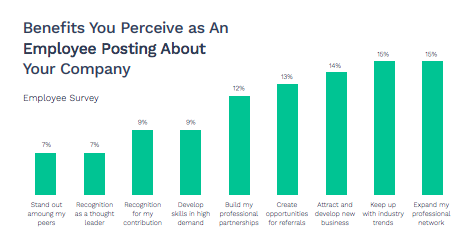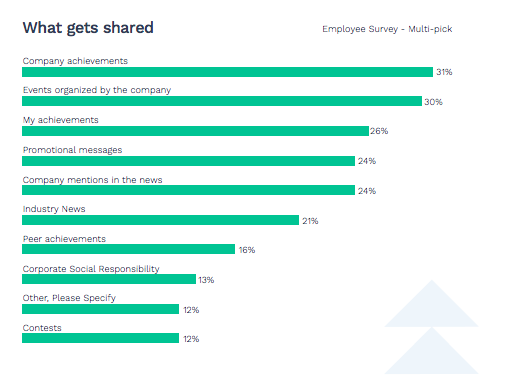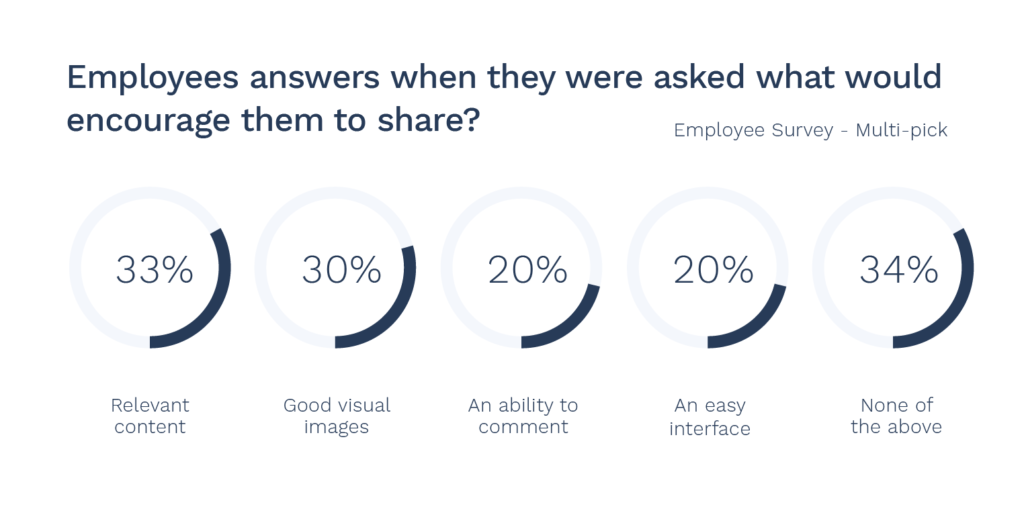Employee advocacy is one way brands can differentiate and gain a competitive advantage on social. There are steps to ensure successful employee advocacy, but if employees are not bought into the process the program will never take off.
Encouraging employees to change their ways and embrace a new concept – like employee advocacy – is never an easy task. Some worry about sharing company content on private accounts or if there are any benefits for them individually. Others are more bought into the idea, but still think the process of sharing is too laborious.
These are all legitimate concerns that need to be addressed in order for employees to feel comfortable and bought into the process of employee advocacy. At PostBeyond, we’ve seen many successful employee advocacy programs that launch and maintain high user engagement because they put their employees needs first. While every company and employee advocacy program is unique, the most successful employee advocacy programs follow these six employee focused best practices.
Create Social Media Guidelines for Employees
If employees feel unsure about sharing, they won’t. Establishing social media policies and guidelines are needed to minimize risks, but more importantly to allow employees to feel secure when adopting social advocacy. Training around brand guidelines, confidentiality, and social media platforms provides a framework for employees to feel confident when sharing with their networks.
Struggling to develop social media advocacy guidelines? Download our 11 Steps to Social Media Advocacy.
Explain Individual Benefits
For many in your organization, employee advocacy is a fairly new concept and they might not see what’s it in it for them. Having the ability to easily source approved company branded and industry relevant content allows employees to build their network and thought leadership within their respective field. It also allows those in large organizations to have more transparency across teams and offices. PostBeyond conducted a survey asking employees what benefits they achieve through posting and sharing out company content. Communicating these employee benefits before (or during) program launch is essential to increase excitement and participation.

Choose the Right Content
In addition to making content simple to share, the content needs to be engaging or an employee advocacy program will be in an uphill battle. We asked employees what type of content they want to share and employees were overwhelmingly more likely to share company achievements vs personal achievements. This is great news for those in charge of the company’s employee advocacy.

In addition to “share-worthy” content, employees were also asked what would encourage them to share and the answer was relevant content.

Sifting through irrelevant and unexciting content is not a productive use of an employee’s time. Eventually, they will opt out of the program. To maintain high usage and sharing rates, as the months and years go on, it’s important to tailor content to the specific user/group. Using categories to define content makes it easier for users to find what is relevant to them.
Start Small with a Pilot Group
Rolling out an employee advocacy to an entire organization in one shot can be overwhelming. As the saying goes, you never get a second chance to make a first impression; if the program has any glitches users may leave and never sign back in or participate. Instead, it is wise to choose a small group of highly active employees. As brand advocates already, getting their buy-in and program loyalty is much easier. Work with these individuals to fine-tune program guidelines that work for your organization as a whole.
Make the Program Exclusive
After the employee advocacy program has been established and refined, it is then time for a company-wide rollout. The key to excitement isn’t to make the program mandatory, but rather exclusive. An example of this is BCD travel. When rolling out their employee advocacy program they made access to the PostBeyond platform more of a privilege. Users were hand-selected to participate and if they did not sign in and share content on a regular basis they are removed from the program. This exclusivity strategy continues to keep their employees engaged with the program.
Gamification
Making employee advocacy fun and rewarding is another strategy to ensure usage rates continue to drive positive benefits for the business. Gamification encourages participation and friendly competition. The PostBeyond platform has a leaderboard that allows users to track their performance compared to other platform users. This leaderboard makes it easy for users see their overall performance and when tied to a reward program it pushes employees to hit their sharing goals and drives overall employee advocacy performance.
Ensuring Employee Advocacy Adoption
Encouraging employees to share doesn’t have to be an overly stressful process. Laying the foundation down with these six best practices before launching can help employees to understand why employee advocacy is important, how it will benefit them, and the how they will be rewarded for their participation.
Want to learn more about PostBeyond? Request a demo now!




